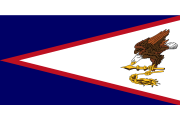|
1-3
|
||
|
2.1 Students reconstruct, interpret, and critique the causes and consequences of past events in the context of the institutions, values, and beliefs of the periods in which they took place.
|
||
|
||
|
||
|
|
||
|
|
||
|
|
||
|
|
||
|
2.2 Students investigate historical experiences of American Samoa, Oceania, the U.S., and the world to reveal patterns of continuity and change.
|
||
|
18th-century figures
19th-century figures
20th-century figures
|
||
|
18th-century figures
19th-century figures
20th-century figures
|
||
|
2.3 Students cite evidence that cultures are dynamic and change over time.
|
||
|
Holidays
|
||
|
Holidays
|
||
|
||
|
||
|
4-6
|
||
|
2.4 Students research and report on where people and places are located and why, utilizing multiple geographic representations and tools (maps, globes, geospatial technologies).
|
||
|
Map skills
Land features
|
||
|
Map skills
Land features
|
||
|
||
|
||
|
Types of neighborhoods
Land features
|
||
|
Types of neighborhoods
Land features
|
||
|
2.5 Students draw conclusions about changes in the relationship between people, places, and environments.
|
||
|
|
||
|
|
||
|
2.6 Students analyze how people create, learn, share, and adapt to culture.
|
||
|
|
||
|
|
||
|
|
||
|
|
||
|
7
|
||
|
2.7 Students synthesize the sociocultural interactions among individuals, groups, and institutions to investigate structures of power and their impacts on authority and governance.
|
||
|
|
||
|
|
||
|
8
|
||
|
2.8 Students apply concepts to explain how people organize for the production, distribution, and consumption of goods and services.
|
||
